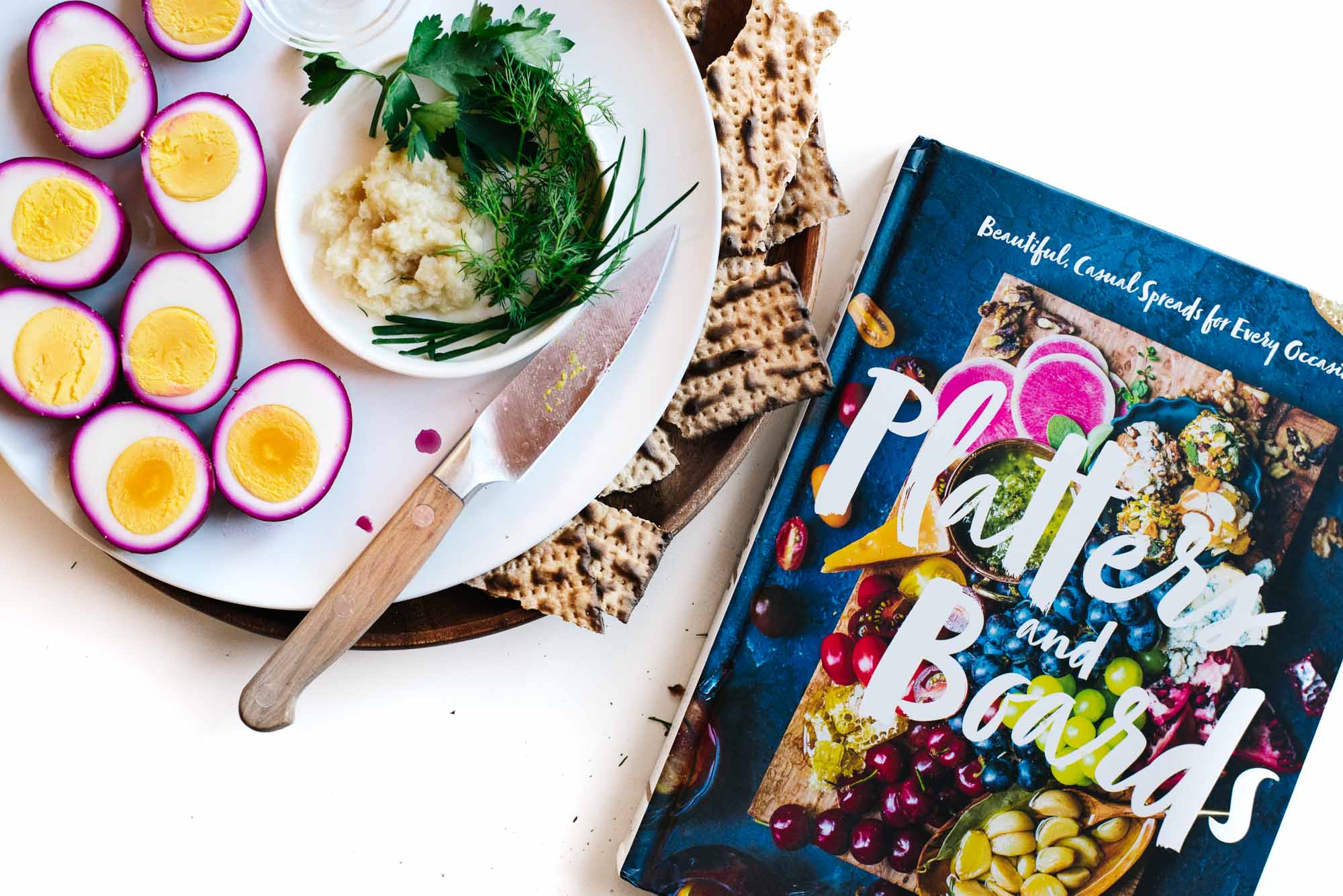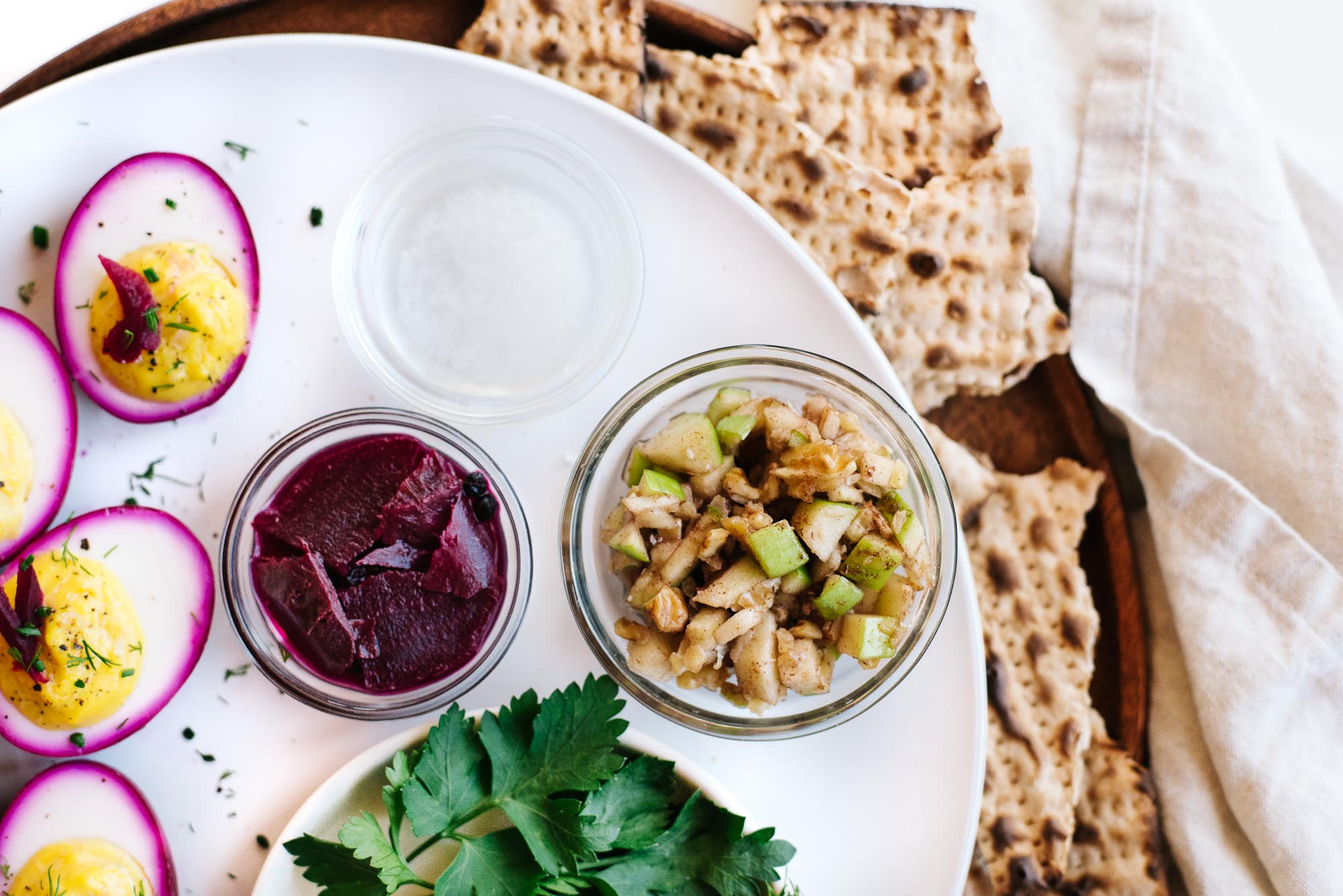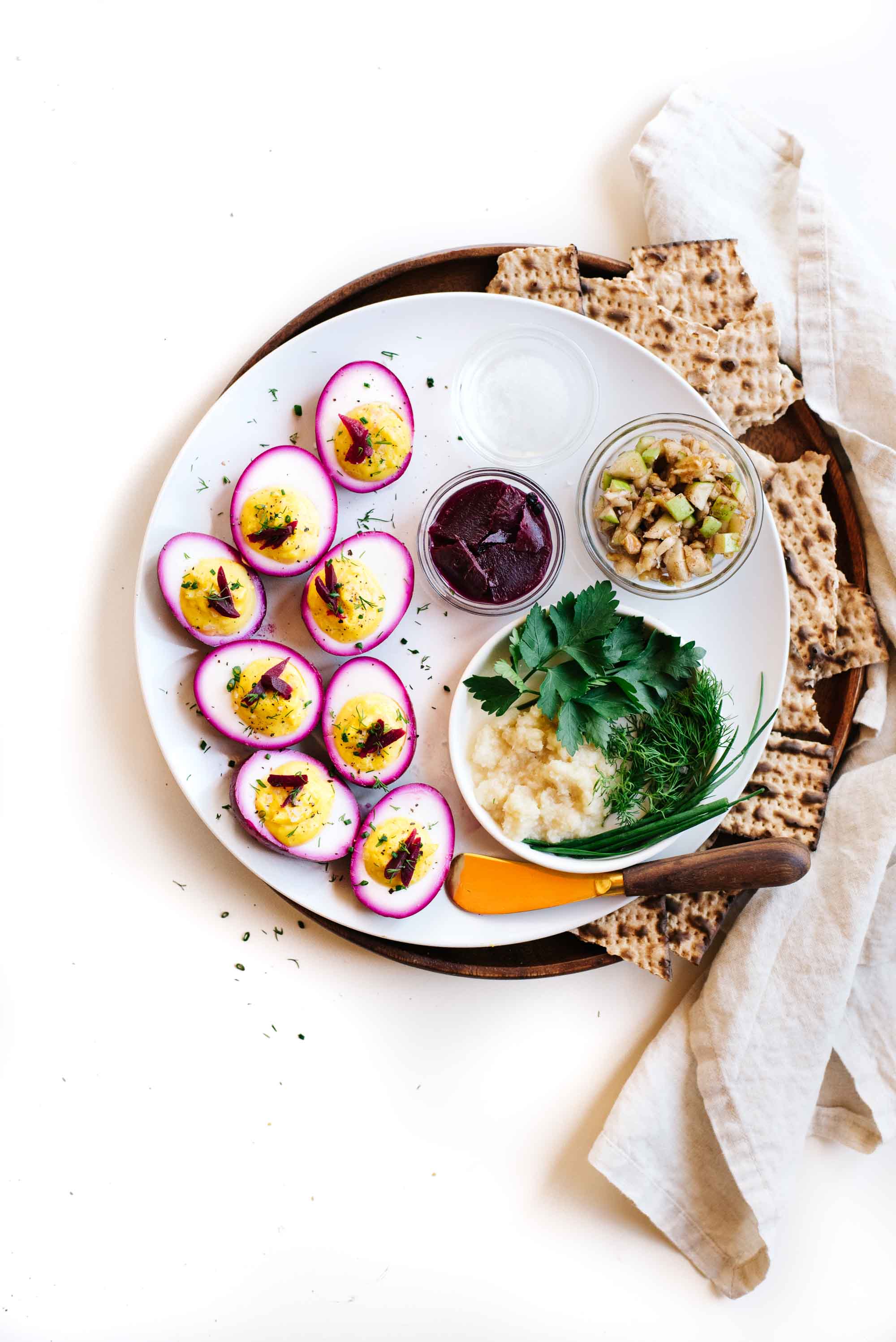
My first definitive Passover seder memory is of a young girl named Jennifer standing on top of a piano bench singing “Jesus Loves Me” at the top of her lungs. She’d just learned the song at school and, sensing a group of folks gathered in semi-earnest religious interest (us Jews at our Passover table), discerned this to be the perfect moment to show off her memorization skills. I remember the adults being duly appalled and entertained; I was a little jealous of this girl’s chutzpah (a shiksa, no less!). When was the last time I’d dared to sing “Jesus Loves Me” in front of a bunch of Jews? Never, that’s when. Someday, I thought, maybe I’d be cool enough to really show ’em at seders.
We didn’t host our own seders, growing up. Instead, my mom and I would spend an afternoon or evening making charoset (the mortar of the enslaved Jews, culinarily transposed into a mixture of apples, spices, red wine, honey, and nuts that I found incredibly delicious) and bring that as our seder offering to our friends’ home. The rest was a blur. I remember the lengthy haggadah, the questions (Why, on this night of all nights, do we recline to the left?), the recitation of plagues by dipping a pinky finger into a cup of usually forbidden red wine and splashing dots of “blood” onto an empty plate. I remember a history of sorrow.




Today, I still haven’t sung “Jesus Loves Me” at any Passover gatherings, nor have I hosted my own seder proper. Since I moved to LA, I’ve spent nearly every Passover in the courtyard of my friend Suzanne’s bungalow, investigating Jewishness and delicious food with my California chosen family. This weekend, a few friends and I will gather at my new home on the first night of Passover. It will be a seder-light, though I’ll probably recreate this newly minted vegetarian seder plate. The idea came to me as I was flipping through Shelly Westerhausen’s new book Platters and Boards: Beautiful, Casual Spreads for Every Occasion. Shelly wrote and photographed the book in collaboration with her partner Wyatt Worcel, and every page is a celebration of the joy and deliciousness inherent in culinary collaboration.
As I flipped through the book, Shelly’s Beet-Pickled Deviled Eggs caught my eye. And as I surveyed the accompaniments on the deviled egg platter, I couldn’t help but think it was slightly reminiscent of a traditional Passover seder plate. What if, instead of a whole hardboiled egg that remains uneaten, I used these deviled eggs—and ate them? How sacrilegious would this revamped, entirely edible, totally unorthodox seder plate be?




The Passover seder plate is uniquely positioned to educate through the experiential lens of the senses. We experience the sorrow of our ancestors’ condition by dipping karpas (fresh parsley and herbs) into salt water, symbolic of tears shed in captivity. We taste the bitterness of enslavement in horseradish, and feel the density of the mortar used to make bricks for the pharaoh in charoset. The egg (beitzah) symbolizes the cycles of life and the possibility of new hope. Finally, the traditional zeroa (lamb shank) reminds us of the lamb that was sacrificed the night before leaving Egypt.
Considering the beet-pickled deviled eggs, I wondered about replacing the lamb shank with pickled beets, which would evoke the blood of sacrifice, to create a vegetarian seder plate. Turns out this is a literally kosher alternative: myjewishlearning.com cites, “The Talmud mentions beets as one of the vegetables sometimes dipped during the seder.”
And thus was born our entirely edible, totally vegetarian Seder plate.





This is a plate of food that tells a story—like every plate does, if we’re paying attention. Here, we have the opportunity to learn with each bite, to better understand our own place in the lineage of our ancestors. I haven’t kept to the traditional placement of symbolic foods, nor have I followed the orthodoxy of ingredients, but the potency of their symbolism remains. And I would much rather have a seder plate of foods that I can interact with than a platter that feels stagnant, separate from my current experience.
I’m no rebbe, but my hope is that this updated seder plate gives you a greater feeling of closeness to the meaning of Passover and its history. After all, isn’t that the point of the seder—that we imagine what it might be like to be in exodus, to leave all that we know for the promise of freedom, a new future? Let’s start here, now.
For more deviled egg recipes, and oodles of gorgeous platters, pick up a copy of Platters and Boards: Beautiful, Casual Spreads for Every Occasion.

Vegetarian Passover Seder Plate with Beet-Pickled Deviled Eggs from Platters & Boards.
Ingredients
Method
- Start on the Beet-Pickled Deviled Eggs at least a day before you serve them, as they need to sit in the pickle juice for at least 12 hours. Note that the longer they are in the beet juice, the deeper pink their rims will be but the tougher the egg white gets. (Some people love this tough texture, but I personally am not a fan. The right amount for my taste is 14 to 16 hours of pickling.)
- Place the eggs in a single layer in a saucepan and add enough water to cover by at least 1 1/2 in [4 cm]. Heat on high until boiling. Let boil 1 minute, remove from the heat, cover, and let sit for 12 minutes. Drain and run the eggs under cold water for 1 minute. Crack the shells and carefully peel the eggs (I usually do this under cold running water for best results).
- Place the eggs in a large Mason jar. Pour the pickled beets and their juices, the vinegar, brown sugar, peppercorns, and salt over the eggs. Cover and gently shake to make sure everything is mixed together. Refrigerate for 14 to 16 hours (longer if you want a deeper pink rim, but the egg whites will be tougher the longer they pickle).
- Using a slotted spoon, remove the eggs from the pickle mixture. Slice all the eggs in half lengthwise. Scoop out the egg yolks and put them in a small bowl. Set aside the egg whites. Add the mayonnaise, mustard, and relish to the bowl with the egg yolks and use a fork to mash them together until combined. Season with salt and ground pink pepper. Divide the filling evenly between the egg whites using either a small spoon or piping bag.
- Chop two pickled beets into matchsticks pieces and put in a pinch dish on the garnish tray. Serve immediately.
- Gently toast the walnuts in your toaster oven or on the stovetop in a skillet, cool, and finely chop.
- Mix toasted walnuts with diced apples, wine, honey, cinnamon, and sea salt. Fold in all ingredients until they’re fully incorporated. Store in an airtight container in the fridge until ready to serve.
- Select a large round platter and a slightly smaller (still large) round plate to layer on top of the platter.
- Place the charoset, horseradish, pickled beets, fresh herbs, and salt water in individual bowls of size according to the amount being served.
- Arrange the deviled eggs on one side of the plate. Fill in the empty space on the plate with the bowls of charoset, horseradish, pickled beets, fresh herbs, and salt water.
- Break up the matzoh and tuck it into the space between the bottom platter and the plate on top.
- Good pesach!






